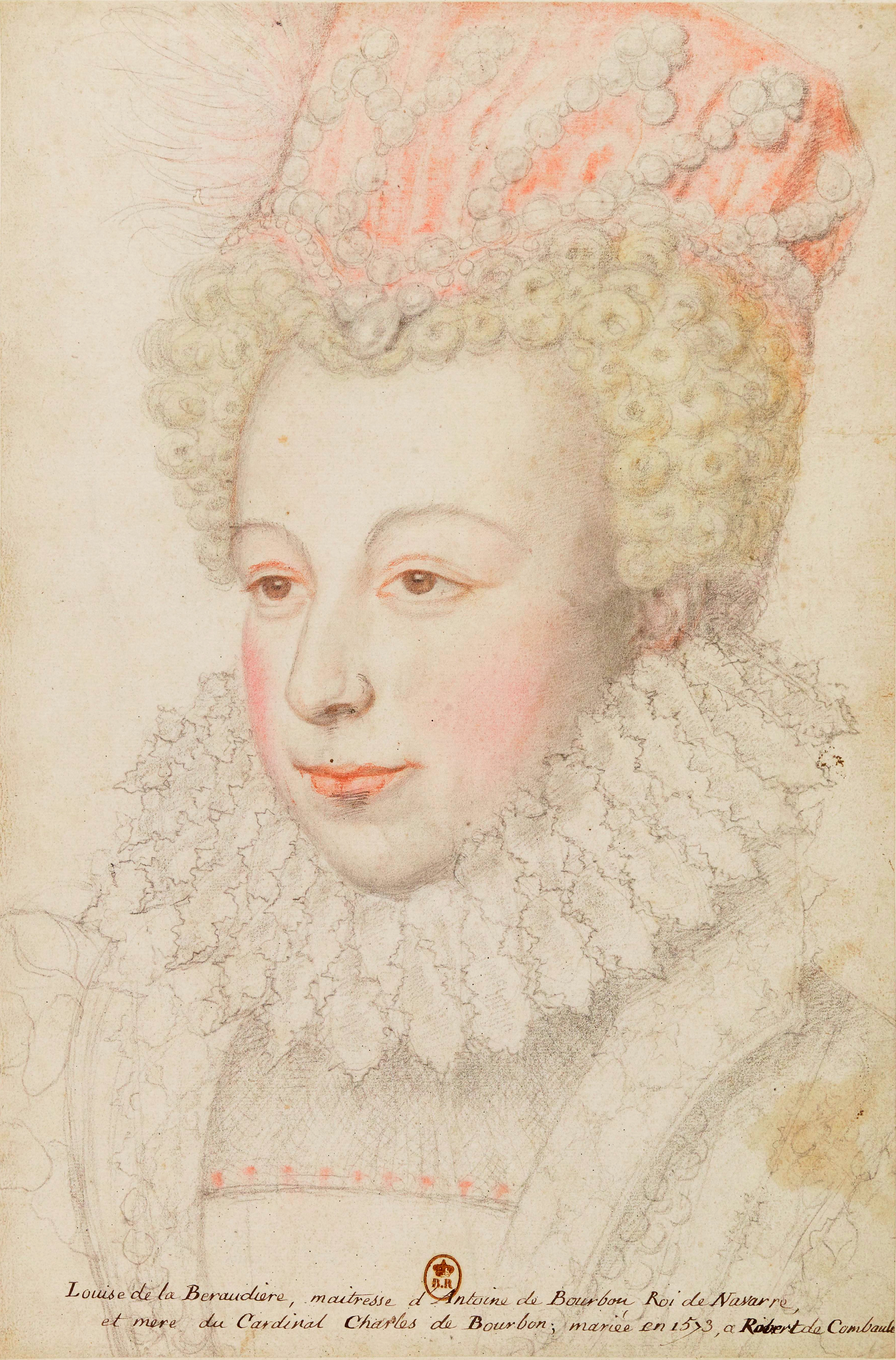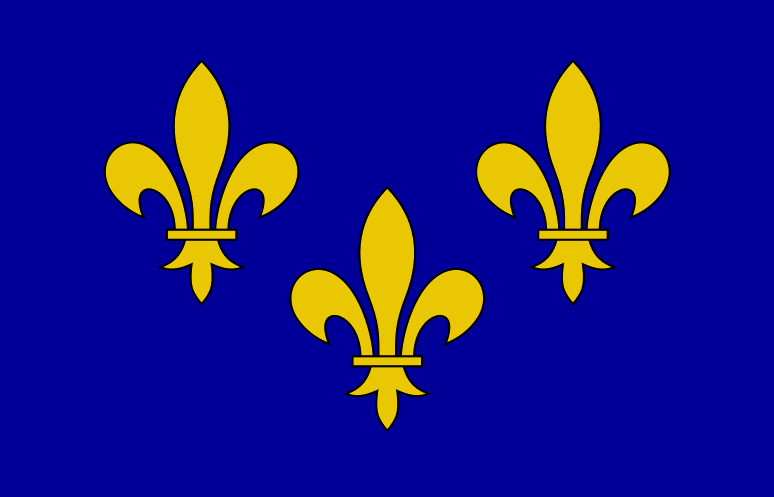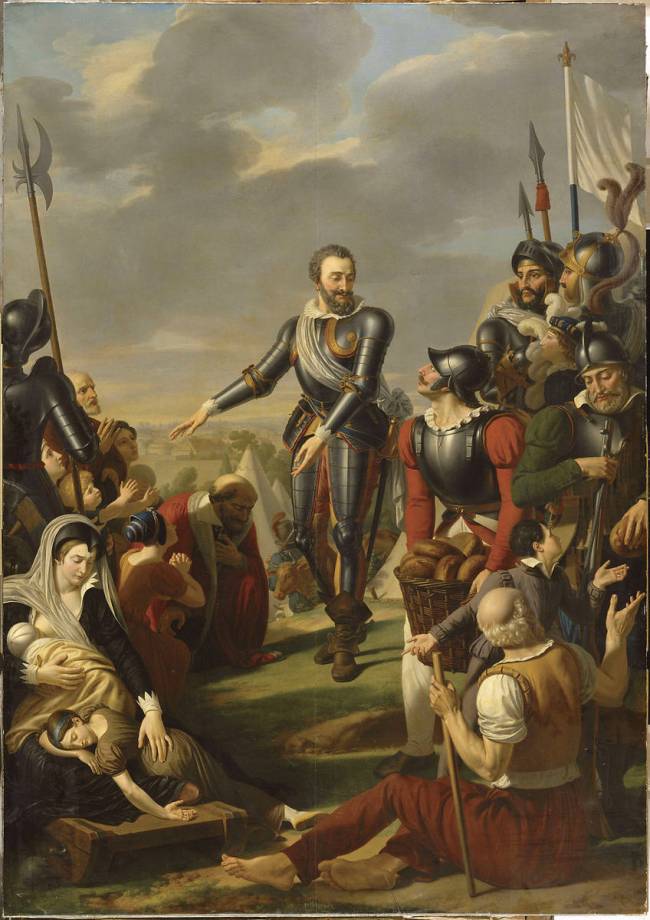|
Catholic League (French)
The Catholic League of France (), sometimes referred to by contemporary (and modern) Catholic Church, Catholics as the Holy League (), was a major participant in the French Wars of Religion. The League, founded and led by Henry I, Duke of Guise, intended the eradication of Protestantism from Catholic France, as well as the replacement of the French Henry III of France, King Henry III, who had acquiesced to Protestant worship in the Edict of Beaulieu (1576). The League also fought against Henry IV of France, Henry of Navarre, the Protestant prince who became presumptive heir to the French throne in 1584. Pope Sixtus V, Philip II of Spain, and the Jesuits were all supporters of this Catholic party. Origins Local confraternities were initially established by French Catholics to counter the Edict of Beaulieu in 1576. Henry III of France, King Henry III placed himself at the head of these associations as a counter-balance to the ultra-Catholic League of Peronne. Following the repu ... [...More Info...] [...Related Items...] OR: [Wikipedia] [Google] [Baidu] |
French Wars Of Religion
The French Wars of Religion were a series of civil wars between French Catholic Church, Catholics and Protestantism, Protestants (called Huguenots) from 1562 to 1598. Between two and four million people died from violence, famine or disease directly caused by the conflict, and it severely damaged the power of the French monarchy. One of its most notorious episodes was the St. Bartholomew's Day massacre in 1572. The fighting ended with a compromise in 1598, when Henry of Navarre, who had converted to Catholicism in 1593, was proclaimed Henry IV of France, King Henry IV of France and issued the Edict of Nantes, which granted substantial rights and freedoms to the Huguenots. However, Catholics continued to disapprove of Protestants and of Henry, and his assassination in 1610 triggered a fresh round of Huguenot rebellions in the 1620s. Tensions between the two religions had been building since the 1530s, exacerbating existing regional divisions. The death of Henry II of France in J ... [...More Info...] [...Related Items...] OR: [Wikipedia] [Google] [Baidu] |
Malcontents (France)
The Malcontents were a faction of gentlemen in the "fifth" French War of Religion (1574–1576). They opposed the policy of Henry of Valois, duc d'Anjou, who had become king under the name Henry III on 30 May 1574, and allied themselves with the Huguenots The Huguenots ( , ; ) are a Religious denomination, religious group of French people, French Protestants who held to the Reformed (Calvinist) tradition of Protestantism. The term, which may be derived from the name of a Swiss political leader, .... The leader was the King's brother Francis, Duke of Alençon (made Duke of Anjou in 1576). The main goal of the Malcontents was to oppose the absolutist ambitions of the King. Established in 1574, they were unhappy (''malcontent'') with the way the King treated the old French nobility.Hillman, R., & Ruberry-Blanc, P. (2013)Marie-Hélène Besnault,«The Political Folly of Malcontents in Early Jacobean Drama�,«Theta X, Théâtre Tudor», 2013, pp. 117–138. The Malcontent movem ... [...More Info...] [...Related Items...] OR: [Wikipedia] [Google] [Baidu] |
Henry III Of France
Henry III (; ; ; 19 September 1551 – 2 August 1589) was King of France from 1574 until his assassination in 1589, as well as King of Poland and Grand Duke of Lithuania from 1573 to 1575. As the fourth son of King Henry II of France, he was not expected to inherit the French throne and thus was a good candidate for the vacant throne of the Polish–Lithuanian Commonwealth, where he was elected monarch in 1573. During his brief rule, he signed the Henrician Articles into law, recognizing the szlachta's right to freely elect their monarch. Aged 22, Henry abandoned Poland–Lithuania upon inheriting the French throne when his brother, Charles IX, died without issue. France was at the time plagued by the Wars of Religion, and Henry's authority was undermined by violent political factions funded by foreign powers: the Catholic League (supported by Spain and the Pope), the Protestant Huguenots (supported by England and the Dutch) and the Malcontents (led by Henry's own ... [...More Info...] [...Related Items...] OR: [Wikipedia] [Google] [Baidu] |
Henry I, Duke Of Guise
Henri I de Lorraine, Duke of Guise, Prince of Joinville, Count of Eu (31 December 1550 – 23 December 1588), sometimes called ('Scarface'), was the eldest son of François, Duke of Guise, and Anna d'Este. His maternal grandparents were Ercole II d'Este, Duke of Ferrara, and Renée of France. Through his maternal grandfather, he was a descendant of Lucrezia Borgia and Pope Alexander VI. A key figure in the French Wars of Religion, he was one of the namesakes of the War of the Three Henrys. A powerful opponent of the queen mother, Catherine de' Medici, Assassination of Henri I, Duke of Guise, Henri was assassinated by the bodyguards of her son, Henry III of France, King Henry III. Early life Henri was born on 31 December 1550, the eldest son of François, Duke of Guise, François de Lorraine, the duke of Guise, one of the leading magnates of France, and Anna d'Este, daughter of the Duke of Ferrara. In his youth he was friends with Henry III, the future king, and at the behest ... [...More Info...] [...Related Items...] OR: [Wikipedia] [Google] [Baidu] |
Catholic Church
The Catholic Church (), also known as the Roman Catholic Church, is the List of Christian denominations by number of members, largest Christian church, with 1.27 to 1.41 billion baptized Catholics Catholic Church by country, worldwide as of 2025. It is among the world's oldest and largest international institutions and has played a prominent role in the history and development of Western civilization.Gerald O'Collins, O'Collins, p. v (preface). The church consists of 24 Catholic particular churches and liturgical rites#Churches, ''sui iuris'' (autonomous) churches, including the Latin Church and 23 Eastern Catholic Churches, which comprise almost 3,500 dioceses and Eparchy, eparchies List of Catholic dioceses (structured view), around the world, each overseen by one or more Bishops in the Catholic Church, bishops. The pope, who is the bishop of Rome, is the Papal supremacy, chief pastor of the church. The core beliefs of Catholicism are found in the Nicene Creed. The ... [...More Info...] [...Related Items...] OR: [Wikipedia] [Google] [Baidu] |
Battle Of Fontaine-Française
The Battle of Fontaine-Française occurred on 5 June 1595 between the French royal forces of King Henry IV of France and troops of Habsburg Spain, Spain and the Catholic League (French), Catholic League commanded by Juan Fernández de Velasco, 5th Duke of Frías, Juan Fernández de Velasco and Charles of Lorraine, Duke of Mayenne, during the eighth and final war (1585–1598) of the French Wars of Religion. Background In response to Henry IV's forces, led by Charles de Biron, taking Beaunne, Autun, and besieging Dijon, Juan Fernández de Velasco, 5th Duke of Frías, traversed the Alps with 2,000 horse and 8,000 foot soldiers in early June 1595. He joined the surviving members of the Catholic League including 400 horse and 1,000 foot soldiers, led by Charles of Lorraine, Duke of Mayenne. They besieged and took Vesoul. Velasco and Mayenne then advanced toward Dijon intending to relieve the besieged city. Henry IV, hearing of their movements, quickly assembled 3,000 troops and hasten ... [...More Info...] [...Related Items...] OR: [Wikipedia] [Google] [Baidu] |
Siege Of Morlaix (1594)
The siege of Morlaix took place from 6 September to 17 September 1594 during the French Wars of Religion and the Anglo-Spanish War (1585–1604).MacCaffrey pp 193 The siege was fought between the French Royal army under Marshal D'Aumont reinforced by an English contingent under Sir John Norreys who besieged the town of Morlaix, which was held by the combined forces of Spain and the Catholic League of France.Hadfield & Hammond p 42-43 A relief force of Spanish troops under the Juan del Águila and another of Leaguers under the Duke of Mercœur were turned back by an English force under John Norreys.Nolan pp 210-13 With the arrival of a fleet of English ships under Martin Frobisher the garrison swiftly surrendered.Bicheno pp 279-80 Background Since 1562 France had been in the grip of the French Wars of Religion, in which Spain had regularly intervened in favour of the Catholic League of France.Horne pp.82–83 King Henry IV of France ( French: ''Henri de Bourbon'') had been f ... [...More Info...] [...Related Items...] OR: [Wikipedia] [Google] [Baidu] |
Battle Of Craon
The battle of Craon took place during the Brittany campaign of the French Wars of Religion in Craon, Mayenne between 21–24 May 1592. It was fought between a Kingdom of France, French Crown army under Henri de Bourbon, Duke of Montpensier and François de Bourbon, Prince of Conti and a joint Catholic League (French), Catholic League and Habsburg Spain, Spanish force; the French Crown troops were reinforced by a contingent of Kingdom of England, English soldiers. The battle occurred during a French Crown siege of Craon directed by Henry IV of France, Henry of Navarre, which was lengthened by the defending garrison being supported by a Catholic League army recruited by Philippe Emmanuel, Duke of Mercœur. Ultimately, a Spanish force led by Juan del Águila defeated the besiegers and relived the city. Background The commander of the Catholic League (French), Catholic League of France in the region, the Philippe Emmanuel, Duke of Mercœur, Duke of Mercœur, Governor of Brittany, or ... [...More Info...] [...Related Items...] OR: [Wikipedia] [Google] [Baidu] |
Siege Of Caudebec
The siege of Caudebec () was a military event that took place between 24 April to 21 May 1592 as part of the French Wars of Religion and the Anglo-Spanish War (1585–1604). (French) The Spanish and the French Catholic League forces of Duke of Parma had captured the town of Caudebec on the Seine, where they soon found themselves trapped by the reinforced Royalist Protestant army led by Henry of Navarre consisting of French, English, and Dutch troops.Sutherland p 428 Seeing that Henry's force had now surrounded him, Parma seeing that defeat was inevitable, pulled his 15,000 men across the river in a single night to escape and retreat to the south.Jacques p 213 Background The Catholic forces of the Duke of Parma had relieved Rouen in April 1592 and had skilfully avoided an engagement with Henry of Navarre's Protestant army.Alan James p.40 After having entered Rouen, Parma then marched west and towards Caudebec on the Seine in the Pays de Caux, a town blocking the road to t ... [...More Info...] [...Related Items...] OR: [Wikipedia] [Google] [Baidu] |
Siege Of Rouen (1591)
Siege of Rouen may refer to: *Siege of Rouen (1143-44), the siege and capture of the town by Geoffrey Plantagenet, Count of Anjou *Siege of Rouen (1204), the siege and capture of the town and castle by the French during the French annexation of Normandy * Siege of Rouen (1418-1419), the siege and capture of the town and castle by the English during the Hundred Years' War *Siege of Rouen (1449), the siege and capture of the town and castle by the French during the Hundred Years’ War * Siege of Rouen (1562), the siege that set the stage for the main battle of the war at Dreux several months later * Siege of Rouen (1591-1592), the unsuccessful siege of the town and castle during the French Wars of Religion, by the Protestant King Henry IV of France Henry IV (; 13 December 1553 – 14 May 1610), also known by the epithets Good King Henry (''le Bon Roi Henri'') or Henry the Great (''Henri le Grand''), was King of Navarre (as Henry III) from 1572 and King of France fro ... [...More Info...] [...Related Items...] OR: [Wikipedia] [Google] [Baidu] |
Siege Of Paris (1590)
The siege of Paris (7 May – 30 August 1590)Knecht, ''Wars of Religion'' p. 65 took place during the French Wars of Religion when the French Royal Army under Henry of Navarre, and supported by the Huguenots, failed to capture the city of Paris from the Catholic League. Paris was finally relieved from the siege by an international Catholic-Spanish army under the command of Alexander Farnese, Duke of Parma. Background After his victory over the Catholic forces commanded by Charles, Duke of Mayenne and Charles of Guise, Duke of Aumale at the Battle of Ivry on 14 March, Henry of Navarre advanced with his troops on his main objective of Paris, possession of which would allow him to confirm his contested claim to the French throne. Paris at the time was a large walled city of around 200,000–220,000 people. Siege On 7 May, Henry's army surrounded the city, imposing a blockade and burnt windmills to prevent food from reaching Paris. Henry had at this point only around 12,000 ... [...More Info...] [...Related Items...] OR: [Wikipedia] [Google] [Baidu] |
Battle Of Ivry
The Battle of Ivry was fought on 14 March 1590, during the French Wars of Religion. The battle was a decisive victory for Henry IV of France, leading French royal and English forces against the Catholic League by the Duc de Mayenne and Spanish forces under the Count of Egmont. Henry's forces were victorious and he went on to lay siege to Paris. The battle occurred on the plain of Épieds, Eure near Ivry (later renamed Ivry-la-Bataille), Normandy. Ivry-la-Bataille is located on the river Eure and about thirty miles west of Paris, at the boundary between the Île-de-France and the Beauce regions. Prelude Henry IV had moved rapidly to besiege Dreux, a town controlled by the League. As Mayenne followed intending to raise the siege, Henry withdrew but stayed within sight. He deployed his army on the plain of Saint André between the towns of Nonancourt and Ivry. Henry had been reinforced by English troops sent in support by Queen Elizabeth I.Morris p 342 * Henry had 12,000 f ... [...More Info...] [...Related Items...] OR: [Wikipedia] [Google] [Baidu] |






